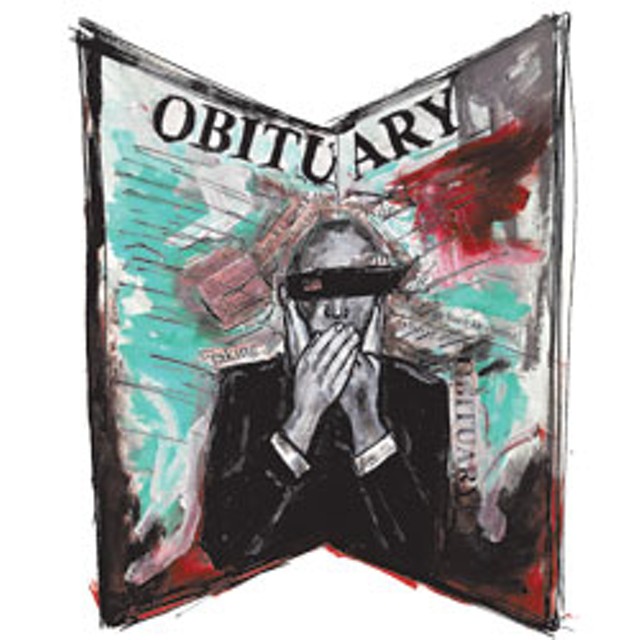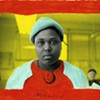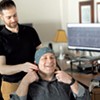Published March 30, 2011 at 11:34 a.m.
Twice this past year, while sitting at my desk at the University of Vermont, I’ve received an email telling me that a student has died. There was a similar tragic announcement this winter at St. Michael’s College. When the cause of death isn’t mentioned, I know all too well what the glaring absence implies. So does everyone else.
Suicide.
The missing word inevitably gets people talking about the silence that typically surrounds it. Some believe the S-word should be spelled out in campus communiqués, because it provides an opportunity to broach another S-word: signs. As in, warning signs that friends or family might have heeded to prevent the suicide in the first place. Others, including me, want to say the F-word to that argument.
Using the word “suicide” won’t help prevent another one; rather, it simply breeds other questions — “How?” “Where?” and “Was there a note?” — until, under the guise of “building awareness,” every shred of morbid curiosity is satisfied. Besides, there’s no shortage of information about suicide and warning signs; type them into Google and you’ll be reading for a month.
So, does the campus or surrounding community really need to hear what we already know when a student dies by his or her own hand? Surely the family’s privacy needs take precedence? Aren’t there plenty of other ways to make students “aware” of suicide warning signs?
UVM does a good job of marketing its mental health services, suicide prevention in particular. On Tuesday, April 19, the Active Minds organization will display 1100 backpacks — in honor of the 1100 college students who commit suicide each year nationwide — on the green between Bailey/Howe Library and the Davis Center. The installation is part of the “Send Silence Packing” awareness program.
But “awareness” isn’t everything. All the finest, fastest information in the world couldn’t save my stepbrother. Nor did my family have a choice about keeping the cause of his death quiet. That choice was made for us, and every detail of his catastrophic demise was up for public consumption.
Craig killed himself on March 30, 2006. He wasn’t a college student, though. He was a 34-year-old cop — although technically not a police officer on the day he died, because he’d been fired two days prior. Yet, according to the media and the community, he’d been a public figure and was fair game. I seriously doubt the news of Craig’s suicide “saved” anyone else. Instead, it seemed like people enjoyed reading about his fall from grace.
Craig had been battling a serious drug addiction for years. He’d been through a 30-day program twice — a fact that only came to my attention after he’d been shot “in the line of duty” earlier in the month. An agency-wide manhunt found no evidence that a sniper was on the loose. Craig finally admitted that it was a stunt. By shooting his own shoulder, he’d hoped to distract himself from his drug obsession. Understandably, he was fired from the force on March 28. He told his mother he was ready to start all over again, maybe even open a fishing business.
“I’m gonna be fine,” he said. “I’m clean and sober. And ready to start anew.”
We all believed him, even though the warning signs were slapping us in the face. He was, as they say, “at high risk.” He’d lost everything to addiction: His wife had divorced him, and his employer had terminated him. He had mounting debts and diminishing self-respect.
Someone could have sent us an email every 13 seconds about suicide, and we would have continued to deny the possibility: “No, not him!” What’s more, he’d been in the recent care of expert mental health professionals, as well as under the constant scrutiny of his friends at the police force and the watchful eye of my father — a neurologist and psychiatrist.
Two days after he was fired, Craig taped newspaper to his bedroom windows. (To block the morning sun? To make cleanup easier?) Then, probably after taking a handful of Percocet, he lifted his shotgun, put the barrel in his mouth and pulled the trigger.
When I heard the news some two hours later, I Googled his name and location and held my breath. Please don’t let it be in the media. Let me get to Florida. Just give us time.
No such luck. Television reporters were stationed in front of Craig’s house. The Naples Daily News website showed a picture of a sheriff’s investigator putting two brown grocery bags in his car.
What’s in there? I wondered. Craig’s gun, or his brains?
The entire city of Naples was getting an instantaneous, bird’s-eye view of our family’s personal tragedy as it was happening to us. Worse — and literally adding insult to injury — the public was free to comment on Craig’s death.
One anonymous commenter wrote sarcastically, “Yes I feel awful for the deputy … please pardon me while I VOMIT. Dear God what type of hiring process does the sheriff’s office have? … something very wrong with it for so many psycho deputies to be on patrol.”
Craig wasn’t a psycho. He was human. He was a part of my family. Another family had him to thank for saving the life of their choking infant. None of this was represented in the media frenzy, however. Nor were any suicide-hotline numbers or statistics or warning signs. And no, he didn’t leave a note.
The television and newspaper reports — as well as comments both negative and sympathetic — continued for weeks.
“What can we do?” my stepmother asked when I arrived in Naples for the memorial service a few days later. “He didn’t exactly go out in a blaze of glory.”
The image I really wish the community could have seen was Craig’s family and friends standing by the flagpole outside the First United Methodist Church, waiting for the bugle corps to play taps.
Silence.
The bugle corps never arrived. The sheriff wouldn’t allow it at Craig’s funeral, because he wasn’t a cop at the time of his death. So Craig, who was treated like a public figure for the way he died, was denied the honor of being buried like one. Two weeks later, another cop in Naples killed himself.
As it turned out, the media and the public got what they wanted — information about the cause of death in all its gory detail. My family was left bare. Five years after Craig’s suicide, we still feel the shame surrounding it. People still look at my stepmother with pity in the grocery store, or turn their carts down another aisle to avoid eye contact altogether.
Whenever I receive an email from UVM about a student’s untimely death, I picture a family just like mine; a family whose members may not yet be able to utter the S-word, who may not know what to say at all, even to each other. The loss of their loved one shouldn’t be turned into a media event unless and until they decide. To demand that they announce their child’s cause of death as a “public service” seems downright cruel — and, in my mind, disturbingly disingenuous. I know my family’s situation is extreme, and it’s unlikely that a college student’s suicide would result in anything similar, but I am compelled to argue in favor of privacy for all families in crisis. And the word for it is decency.
I take comfort in the thought that the families of the two UVM students who died earlier this year were in safe hands when it came time to notify the college community last fall. Thomas Gustafson, vice president for student and campus life, whose job it is to write and email those announcements, knows exactly how they felt. His first wife killed herself on Easter Sunday in 1987, after nine years of marriage. That news from Burlington, Vt., traveled all the way to the Boston Globe. Gustafson has been silent on the matter ever since.
UVM’s policy is to withhold a student’s cause of death if the family requests it. Gustafson didn’t write that policy, but he supports it. And after every such sad report to the campus, he carefully crafts and sends out another one: Call this number. We can help. You don’t have to suffer in silence.
In his view, as well as mine, that’s all the public needs to know.
The “Send Silence Packing” display, presented by Active Minds, happens Tuesday, April 19, 10 a.m. to 4 p.m., on the green between Bailey-Howe Library and the Davis Center at the University of Vermont, in Burlington. activeminds.org
More By This Author
Speaking of...
-

Rep. Anne Donahue Is Determined to Find Out Where Patients of Vermont’s Old Psychiatric Hospital Are Buried
Mar 20, 2024 -

Noah's Arc: Noah Kahan Is Vermont's Biggest Cultural Export in Years. How the Hell Did That Happen?
Jan 31, 2024 -

Vermont Colleges School Students on Wellness as Mental Health Concerns Mount
Jan 17, 2024 -

'We Must Act Now': Burlington Council Passes Resolution on Drug Crisis, Public Safety
Oct 11, 2023 -

A Young Man's Path Through the Mental Health Care System Led to Prison — and a Fatal Encounter
Sep 6, 2023 - More »
Comments
Comments are closed.
From 2014-2020, Seven Days allowed readers to comment on all stories posted on our website. While we've appreciated the suggestions and insights, right now Seven Days is prioritizing our core mission — producing high-quality, responsible local journalism — over moderating online debates between readers.
To criticize, correct or praise our reporting, please send us a letter to the editor or send us a tip. We’ll check it out and report the results.
Online comments may return when we have better tech tools for managing them. Thanks for reading.














































